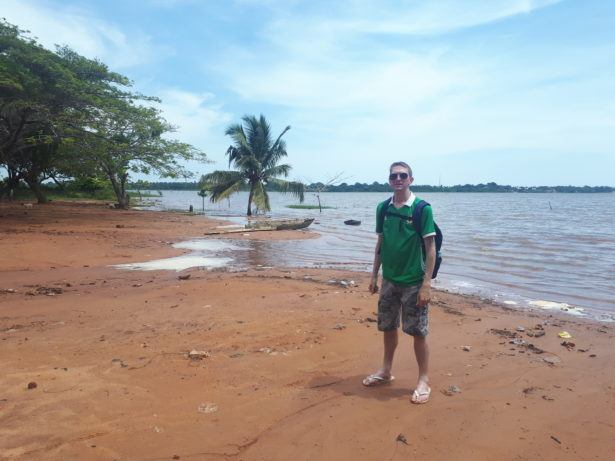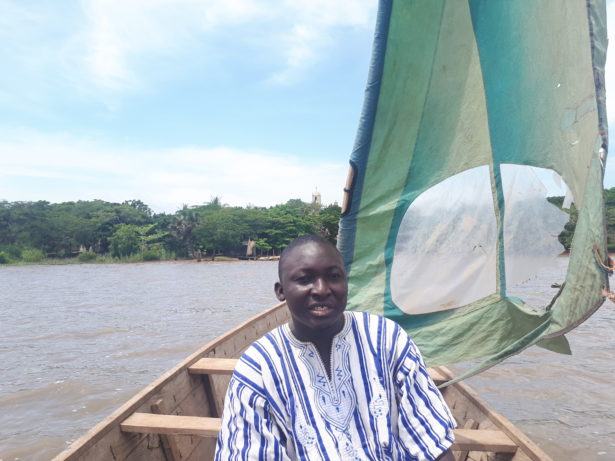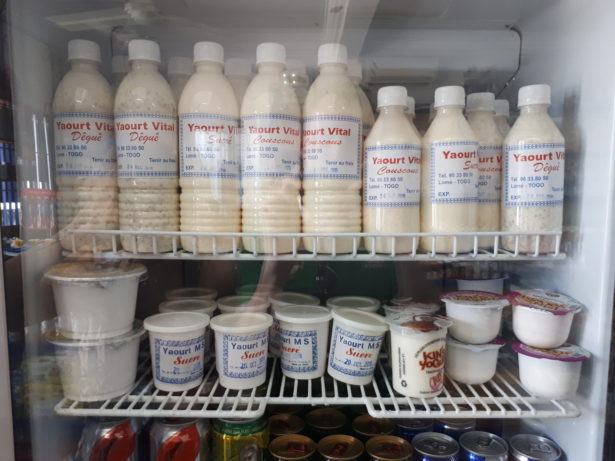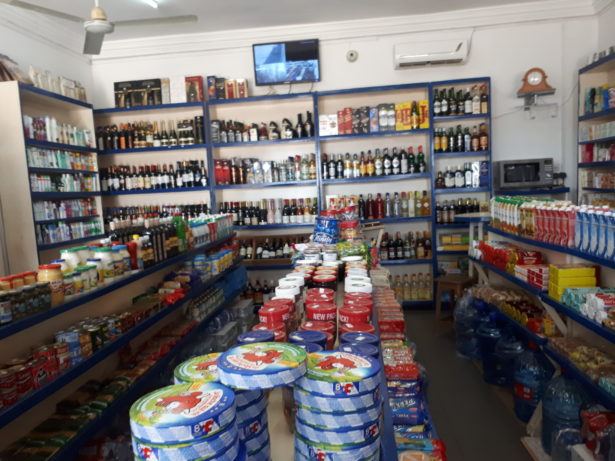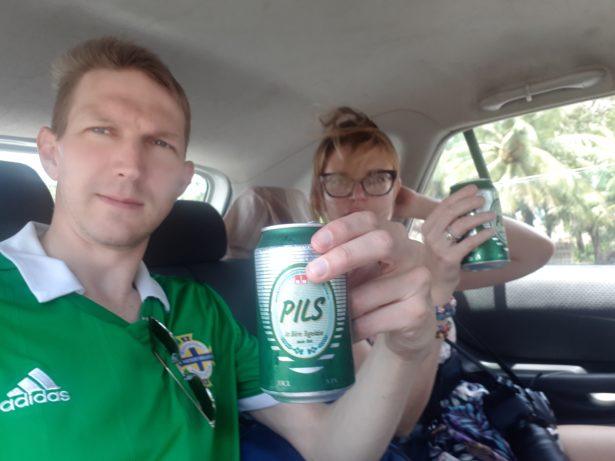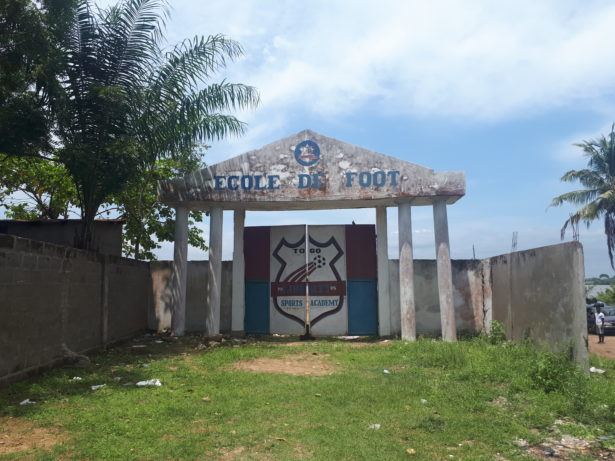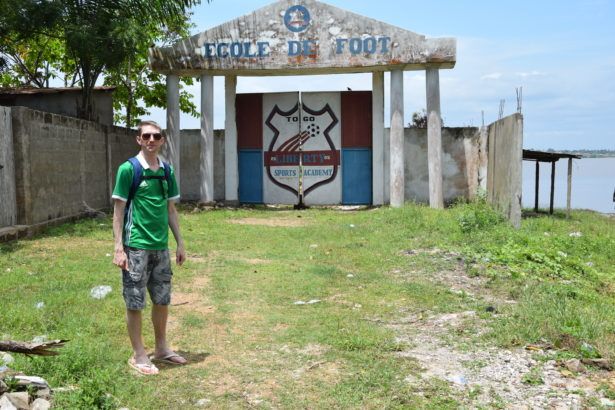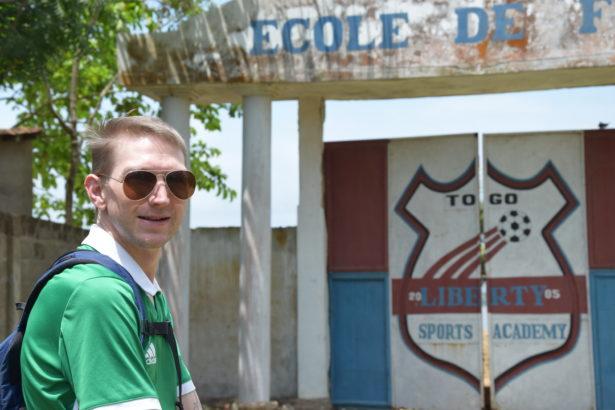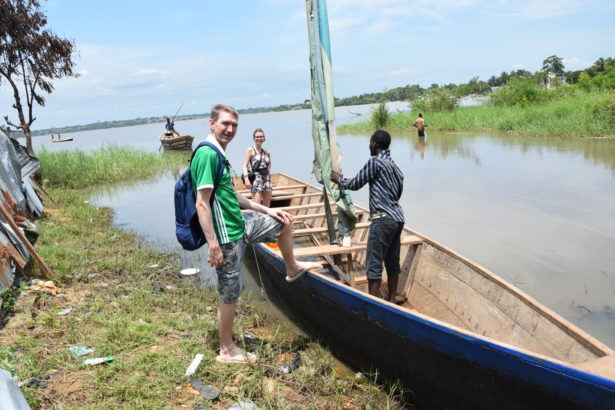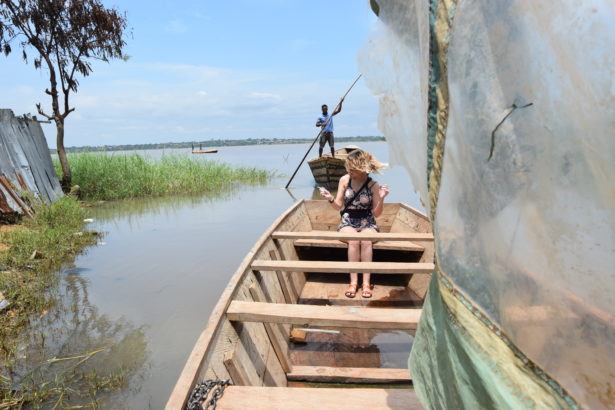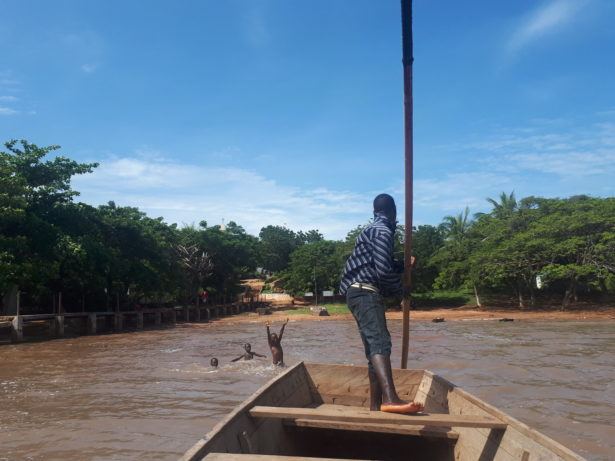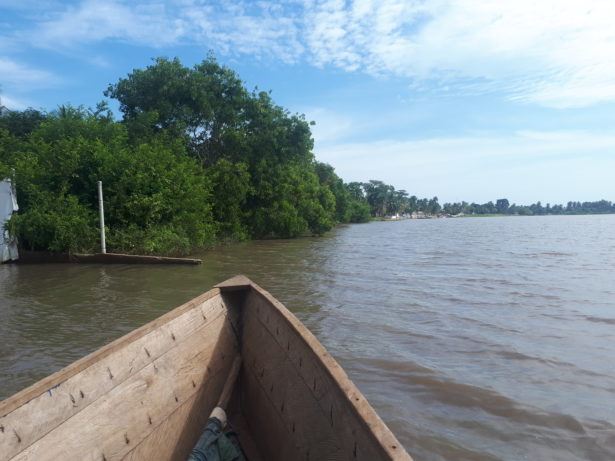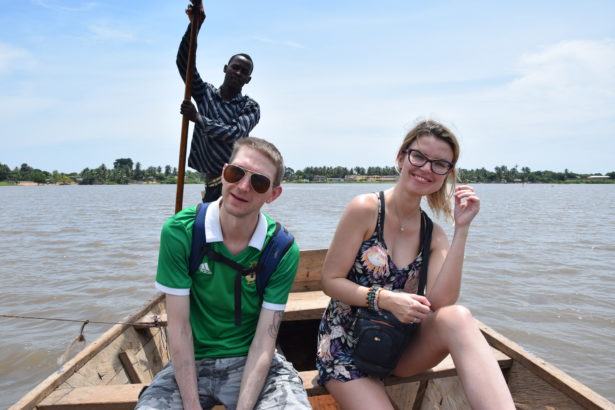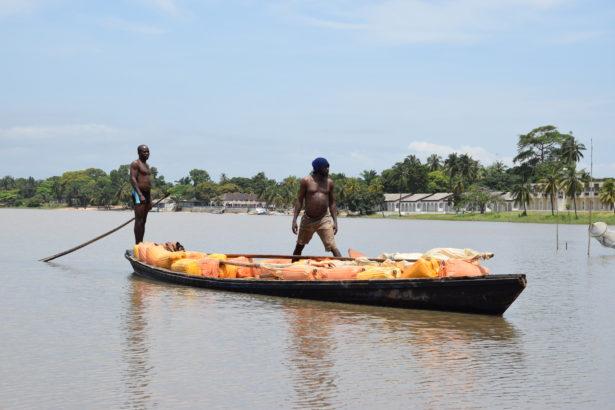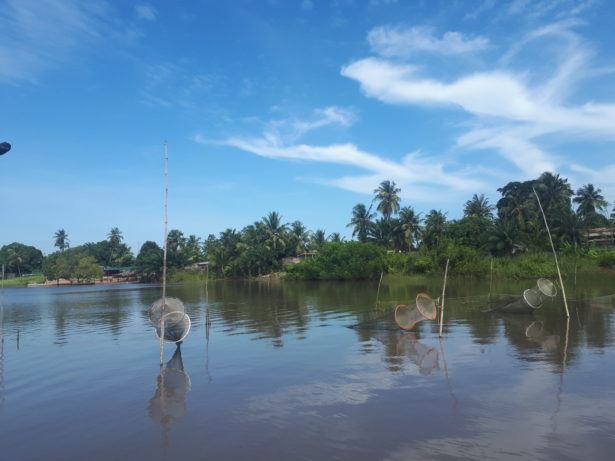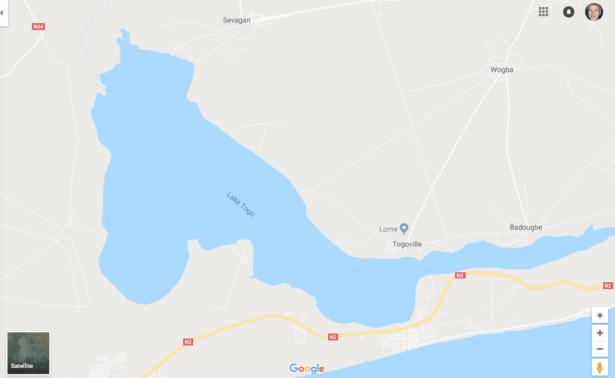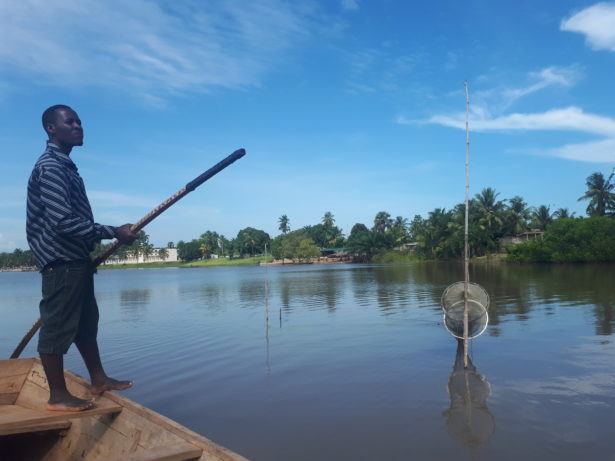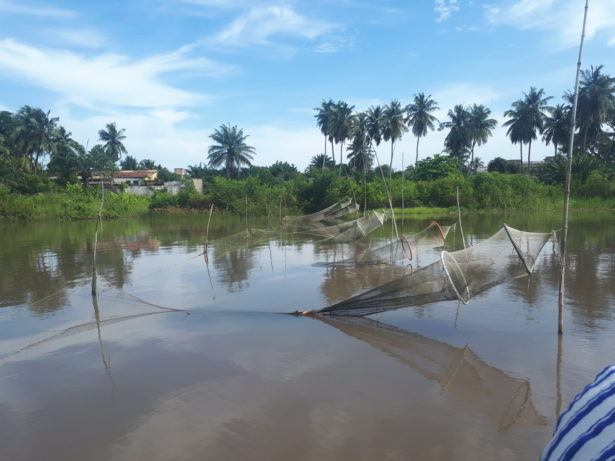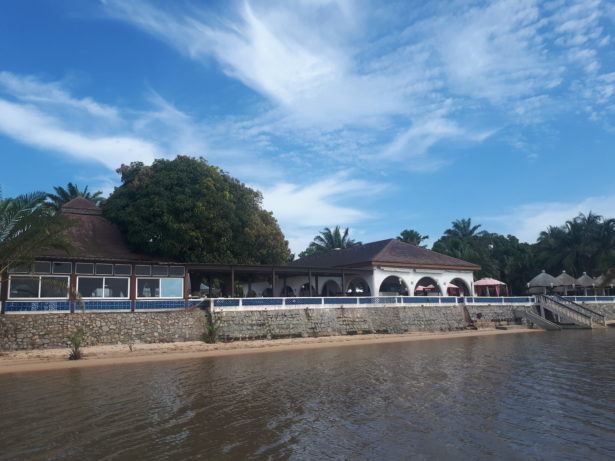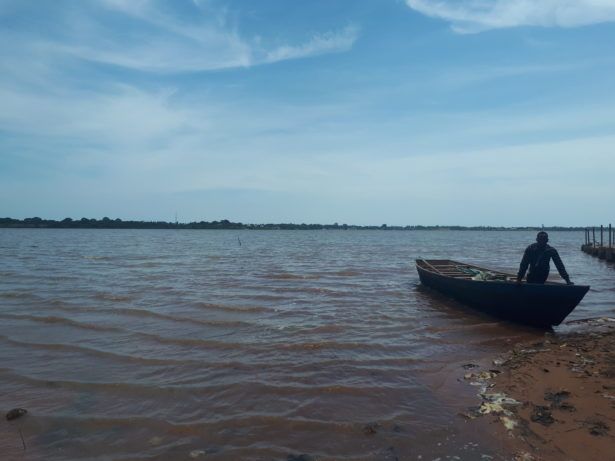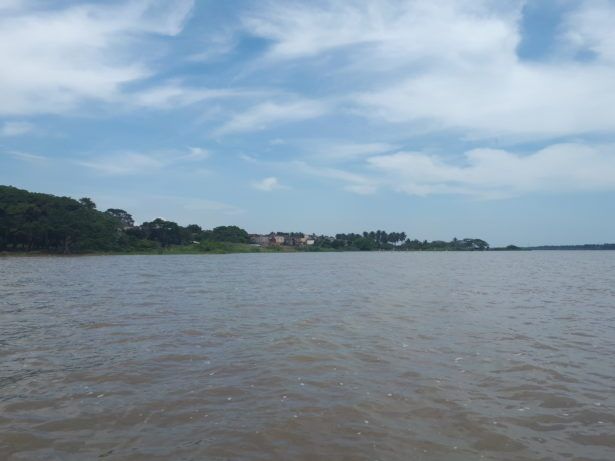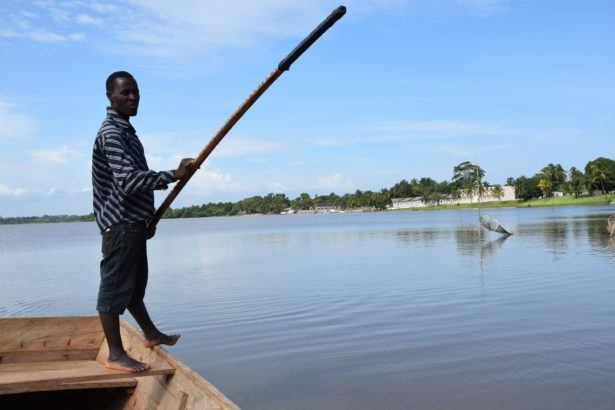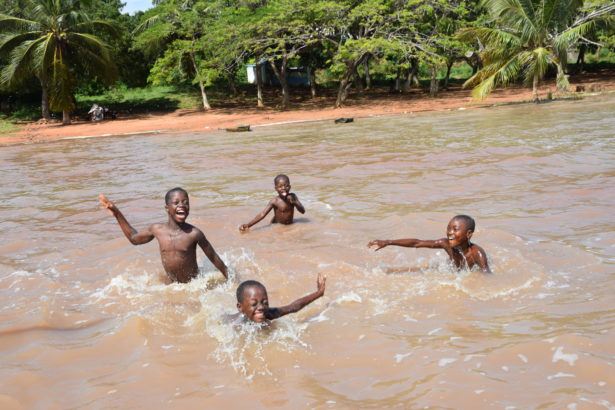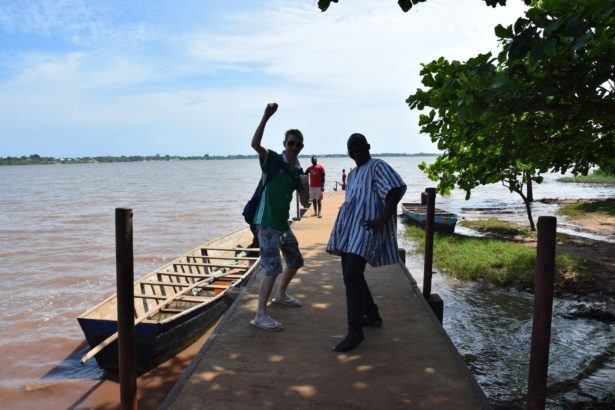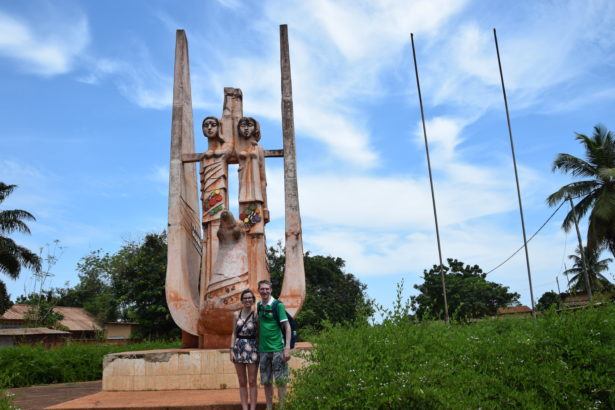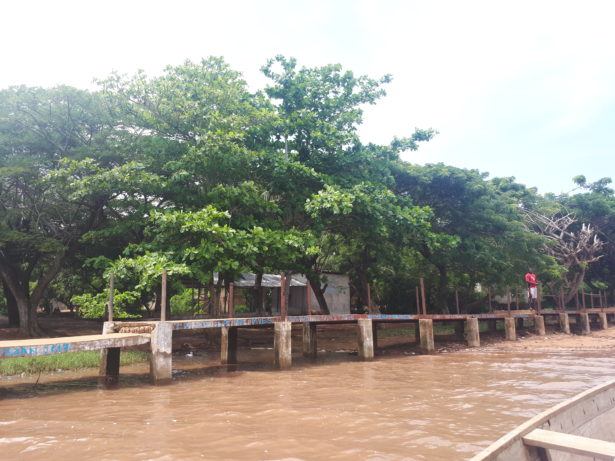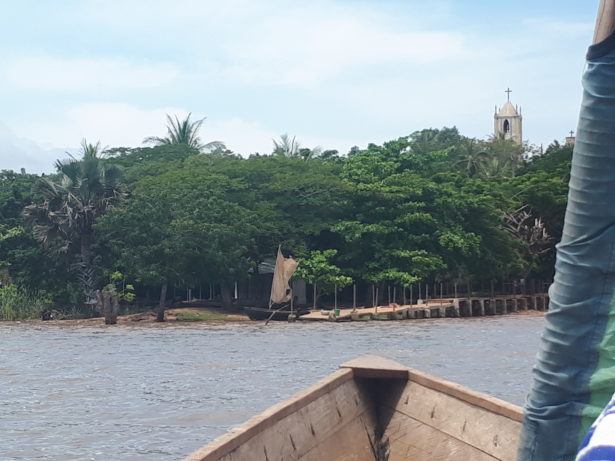“It really really really could happen” – Damon Albarn.
One of the most remarkable sights in Togo is Lake Togo. It is a natural lake in the east of the country. While staying in Coco Beach Hotel just East of Lome, I organised a guided tour with well known tour guide Jeremies.
Jeremies and our driver collected us from the hotel and took us east to Lake Togo, where we would visit the town of Togoville. Togoville is famous for its church, where Pope John Paul II visited in the 1980s, as well as being a spiritual town for Voodooism. I will report separately on our tour or Togoville and the Voodoo Market we visited (Africa’s ‘biggest’ such market we were informed).
The route to Lake Togo
We left behind Lome, and Coco Beach and stopped for petrol on the main coastal road. There was a small shop at the petrol station, where we grabbed some water, dried plantains and an ice cold Togo Beer (Pils la biere Togolaise). The drive took less than an hour and we were at a small village on the south side of Lake Togo.
Arrival at Lake Togo
We arrive at Lake Togo in the late morning. It’s a hot and sunny day. We head past a sports ground which includes a football pitch so I stop to have a quick look and get the obligatory photo.
Crossing Lake Togo from (Unknown southern town) to Togoville
We board the boat in an un-named and unknown southern town (even Jeremies doesn’t know the name of this small settlement, nor does Google or Wikipedia!). Our transport is a small wooden boat without an engine but with a sail/flag.
Our boatsman used only a wooden stick to steer us across the lake, the journey which took around 30 minutes on a hot day. We passed other boats, some of whom were carrying supplies to and from the more isolated settlement of Togoville, once the capital of the empire here. Togoville was here long before Lome; the country of Togo took its name from Togoville…
Lake Togo is not actually that huge – just about 15 kilometres (9.3 miles) long, 6 kilometres (3.7 miles) wide and in total 64km² in area. It receives water from the Sio River in the southwest and various other smaller streams to the west and east and the Haho River enters from the north.
Lake Togo is separated from the sea (Atlantic Ocean basically) by a sandbar a kilometre or so wide. It’s a hot sunshiney day when we visit. The river is calm and the crossing is easy. It’s quite beautiful. It really really is.
There are fish in the lake but there are absolutely NO crocodiles here, despite me joking about it to Malina. I got my crocodile fixes in the Mangrove Forest of El Salvador (2014) and the Kachikally Crocodile Centre in The Gambia (2016).
We arrive safely at the port of Togoville and spend over an hour exploring Togoville with its huge and significant church (once preached to by Pope John Paul II), as well as visiting many trees and shrines which pay homage to voodooism. Locals are friendly and happy. There are no other tourists in town and no museums. Our guided tour is as good as it gets, for this lifetime. I couldn’t imagine living here, but I enjoyed it. Kids swam in the chocolate waters to wave their goodbyes as we sailed out of Togoville, for the first, and for the last time. We hopped back into the boat and back to where the adventure all began on the other side. It was short and sweet…
Here are the details for organising a Lake Togo tour with Jeremies from Mowoki Tours and Fly for Life:
Jeremies Pimizi on Facebook
tours@mowokitours.com
+228 92 11 06 40
Mowoki Tours on Facebook
Mowoki Tours
Fly for Life on Facebook
Thanks to Malina for accompanying me on this trip, the photos on this article are copyright of both Jonny Blair and Fifi Rushfield.
Here are some videos from my time crossing Lake Togo:

 : Crossing Lake Togo to Togoville
: Crossing Lake Togo to Togoville